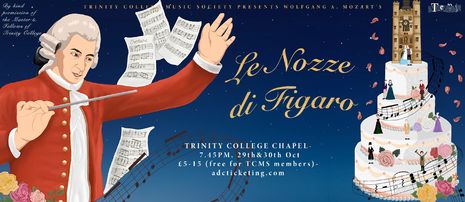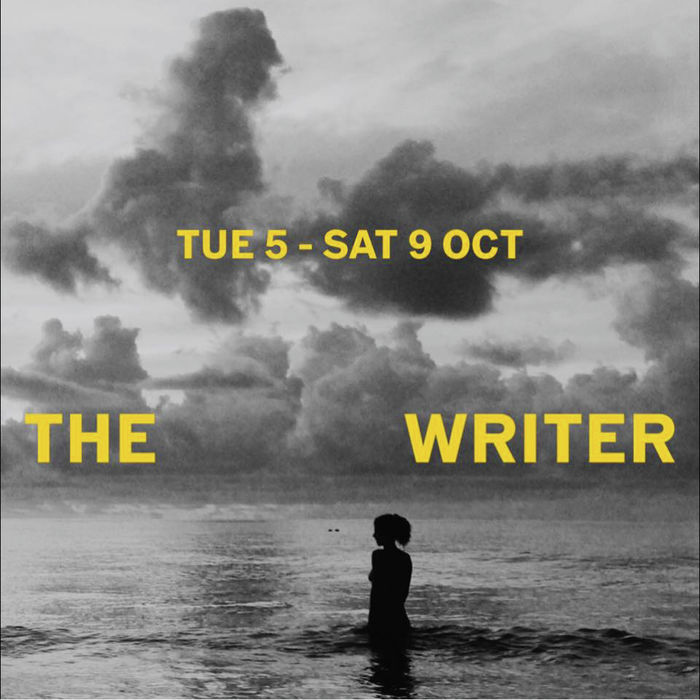Previewing The Marriage of Figaro: An exuberant and ambitious opera
Co-director Benji de Almeida Newton previews TCMS’s production of Mozart’s The Marriage of Figaro

An artful blend of comedy, romance and drama, the monumental popularity of Mozart’s Le nozze di Figaro is well-deserved, if not a little daunting for a production in a world where opera as we know it is only just coming back to life. Set in sunny Seville, Le nozze tells the story of household staff Figaro and Susanna’s continuously disrupted efforts to get married over the course of a single day. As ever, love triumphs despite the colliding schemes of those involved – a success served with a light-hearted lesson in ethics.
The genuine comedy of the opera would be nothing without its interspersed moments of frustration. The Countess’ delayed appearance at the start of Act 2 stays the chaos of the first act for only a moment, and reminds us that love is not just where we’re headed, but is the root cause of the problems at hand. For something perceived to be so casual and fun, it is remarkably dangerous, and Mozart constantly seems to be weighing up its effects: the Count’s attempts to exercise his ‘feudal right’ on Susanna, unaware of the Countess’ yearning; Cherubino’s libertine ambitions despite Barbarina’s despair.
“There is something unstoppable about the succession of arias, duets, and trios”
It is delightfully easy to get distracted, however, by the combination of Mozart’s exuberant score and Da Ponte’s tailspin of a libretto, where the action moves along as if passed through the hands of a magician. After being pushed off a cliff at full speed in the overture, the orchestra bounces its way into a scene of a promising start to domestic life for Figaro and Susanna. There is something unstoppable about the succession of arias, duets, and trios, as if hurried along by fate through the maze of a courtly walled garden, as we recall Figaro’s remark to Cherubino at the end of Act 1: ‘Come cangia in un punto il tuo destino!’ (‘How your fate changes in an instant!’). Under the baton of Max Todes, this well-trodden score, which has been revived seasonally across the globe for decades, surges with new life. This is student opera at its most ambitious.
Considering all these things, the opera is a machine which must be carefully controlled. The plot treads the fine line between a requisite suspension of belief and hallmark farce of opere buffe – and demands subtle delineation. Dresses are hidden under, windows jumped through; there are myriad miscommunications, incredibly close encounters, and genetic coincidences through which we must navigate. Period realism too is only half the objective. As such, our production makes use of bold set design, headed by Daisy Shelton and Fern Acheson, with costuming and makeup designed by Clarissa Hard and Sophie Beckingham respectively. In their expert hands, the production is artistically realised: beauty spots, powdered faces, colourful, character-driven costumes.
This decision comes with the fact that there are no insignificant roles in Le nozze. Hannah Dienes-Williams heroically takes on Susanna – a role for which Mozart has written almost 45 minutes of music. This too applies to the production as a whole. With over 80 members of cast and crew, who have been working hard over the summer months, this opera is a testament to Trinity College Music Society’s dedication to bringing the highest quality production in the most accessible way – not only in terms of prices, but also Covid security (more information on ADC ticketing page).
Le Nozze di Figaro promises to be an evening of fun for everyone in a showcase of both Mozart and Cambridge opera at their (renewed) best.
 News / Cambridge academics stand out in King’s 2026 Honours List2 January 2026
News / Cambridge academics stand out in King’s 2026 Honours List2 January 2026 Interviews / You don’t need to peak at Cambridge, says Robin Harding31 December 2025
Interviews / You don’t need to peak at Cambridge, says Robin Harding31 December 2025 Comment / What happened to men at Cambridge?31 December 2025
Comment / What happened to men at Cambridge?31 December 2025 News / Varsity’s biggest stories of 202531 December 2025
News / Varsity’s biggest stories of 202531 December 2025 Features / “It’s a momentary expression of rage”: reforming democracy from Cambridge4 January 2026
Features / “It’s a momentary expression of rage”: reforming democracy from Cambridge4 January 2026










